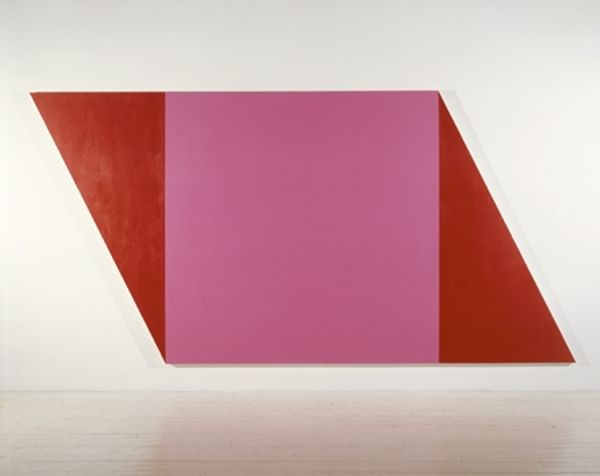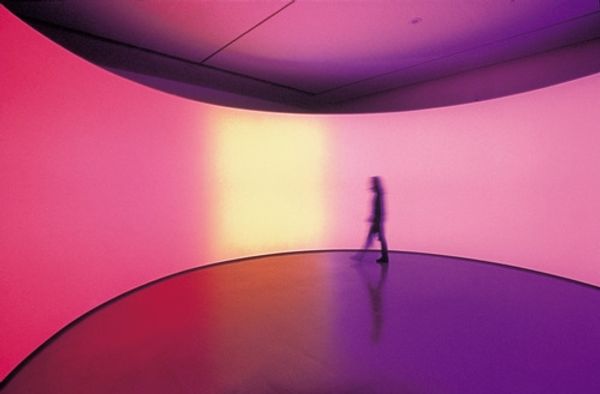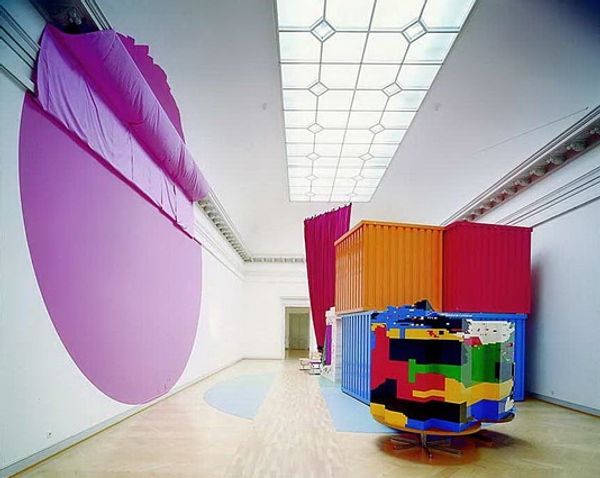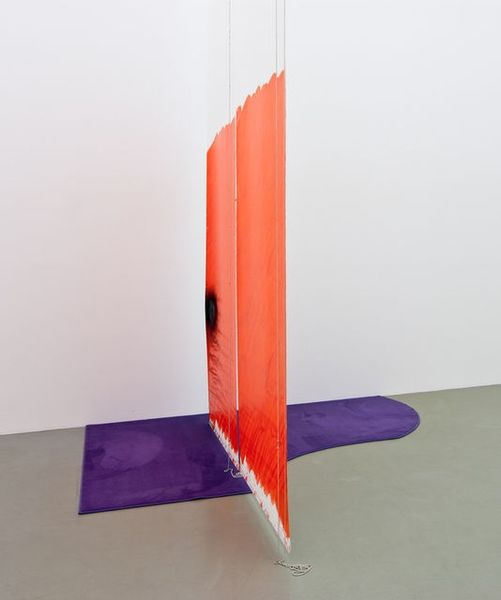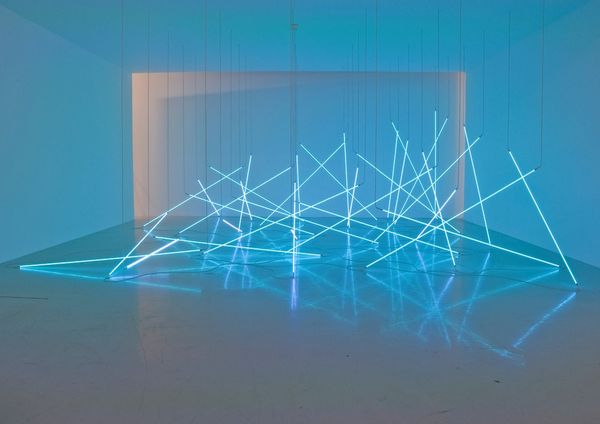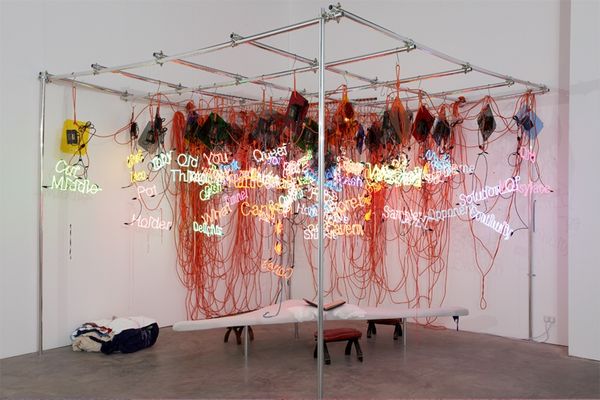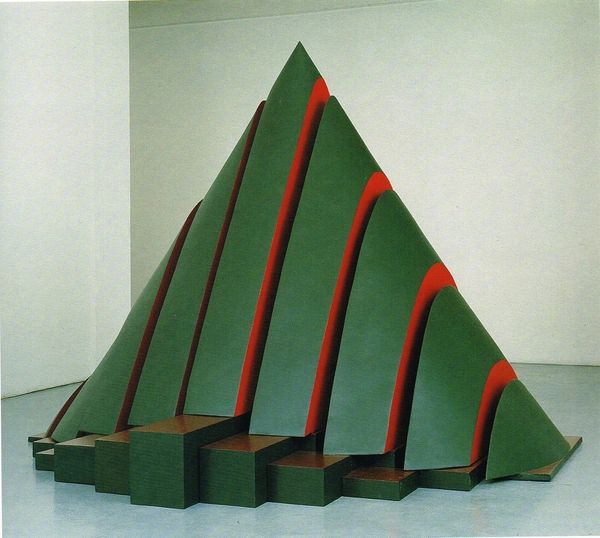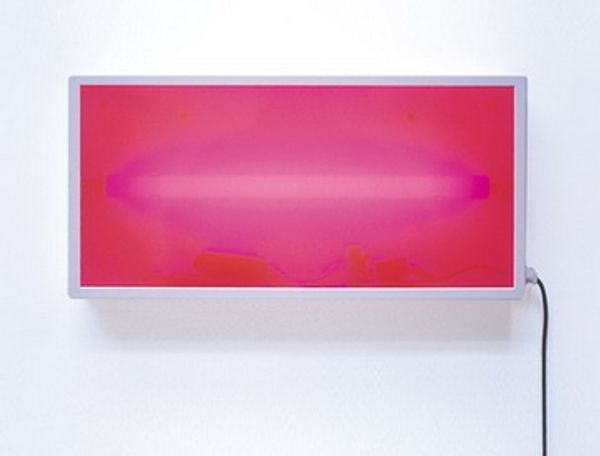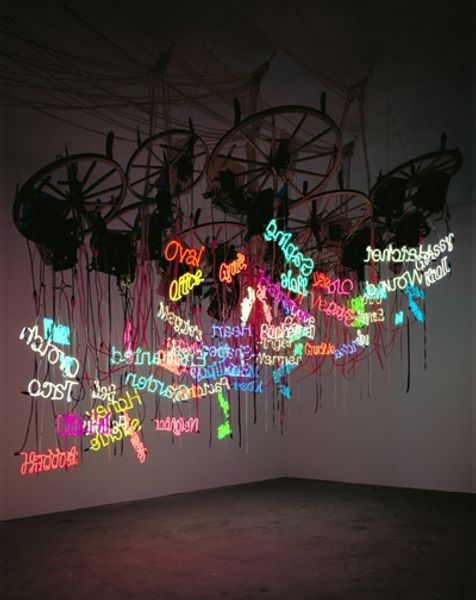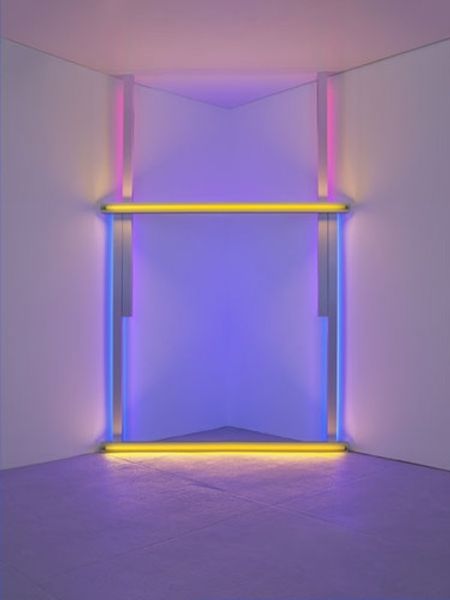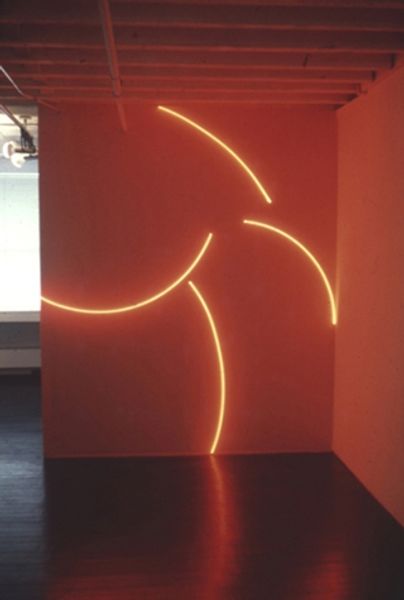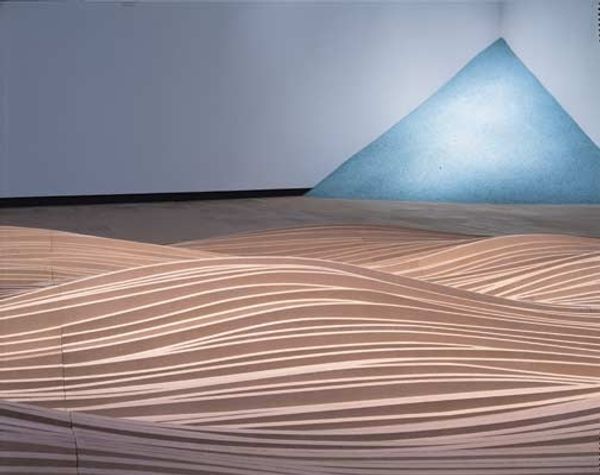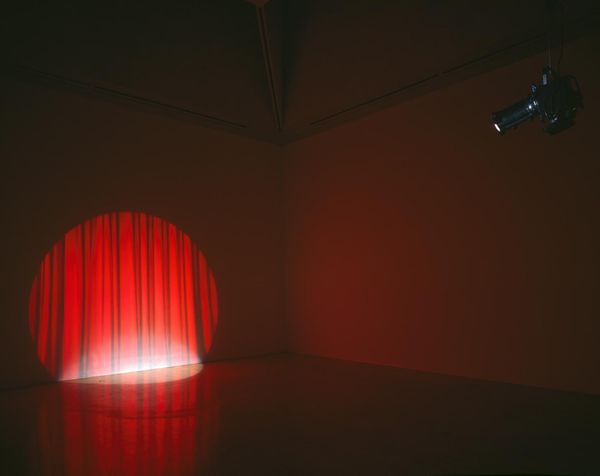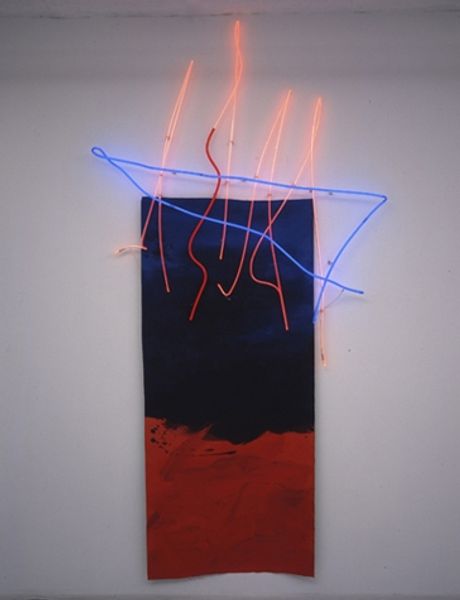
Copyright: Jessica Stockholder,Fair Use
Curator: Jessica Stockholder’s "Growing Rock Candy Mountain Grasses in Canned Sand," from 1992, presents quite the visual statement. Stockholder's known for her mixed-media installations, and this is a particularly vibrant example of her use of space. Editor: It feels like being submerged in a dream—or perhaps drowning in magenta taffy. Those tented forms dominating the foreground evoke this almost claustrophobic feeling, offset somewhat by the brighter patches in the back. Curator: Interesting you say that. What draws me in is how this piece seems to confront institutional norms. Stockholder intentionally disrupts the stark white cube of the gallery space. Consider the implications of using a mundane textile, almost domestic in its character, to completely reshape the gallery landscape. It questions what we consider “art-worthy.” Editor: That magenta fabric indeed holds cultural baggage—performance, perhaps spectacle, but also echoes of draped figures and the visual weight they carried historically. And notice the brown patch toward the left. Its form, to me, is vaguely map-like. Its chaotic collage is suggestive of displaced earth—an altered landscape further emphasized by those scattered… are those bricks? Curator: You’ve spotted the deconstructed building blocks! The artist is definitely playing with the concept of site and non-site—referencing earthworks from the 1960s, but using distinctly artificial means. By employing domestic objects like fabric, Stockholder subverts any grandiose notions about reshaping nature, bringing the scale back down to the personal and the everyday. The gallery becomes almost like an excavated home. Editor: The effect for me, again, is emotional as well. The intense pink combined with these makeshift rocky elements could easily be construed as visually jarring—even unsettling. Yet it holds a curious fascination, like some half-remembered childhood game blown up to monumental size. The use of color here is, beyond its pure shock value, what seems to anchor that feeling of unease and disorientation. Curator: Yes! She cleverly co-opts that discomfort to make us consider how spaces are culturally codified. Ultimately, she is deconstructing conventional notions about space and aesthetics—encouraging us to question how materials accrue value. Editor: It’s a space for dreaming and critical questioning at the same time. Curator: Precisely, making a singular demand to rethink the foundations, both literal and figurative, of artistic and societal structures.
Comments
No comments
Be the first to comment and join the conversation on the ultimate creative platform.
